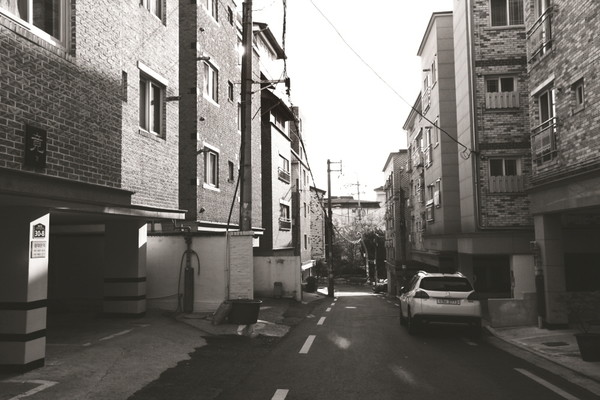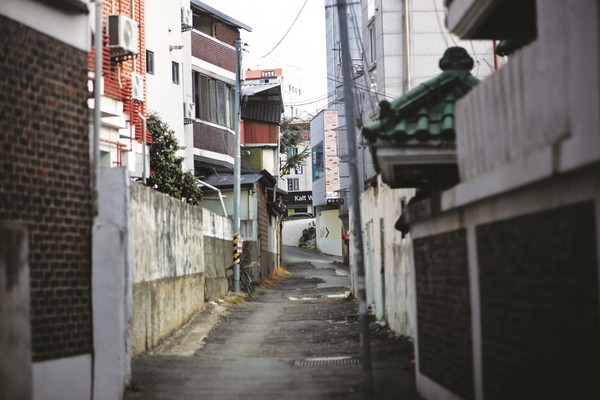The Harsh Reality of Youth Housing

How was your midterm exam? Is there any spot of yours to study? Nowadays, lots of young people visit cafés to study and work. Why do they study in cafés and not in their homes? Some argue that young people’s living spaces are so low-quality that they cannot function as anything more than a shelter. Let’s take a deeper into the young people’s living spaces.
The Harsh Reality of Youth Housing

According to interviewees, a studio apartment in Korea doesn’t take into account the quality of life. Most houses only value "residence" and are just a space where people can eat and sleep. Insufficient streetlights don’t guarantee tenants' right to feel safe, and studio apartments located close to each other violate individual privacy. people in their 20s need space only for themselves. However, even though basic rights are not guaranteed, people are choosing to leave their houses and try living on their own.
Buying a ‘Two-hour Living Room’
In the 1970s, Korean society faced a drastic change. In order to accommodate the growing urban population, apartments that were previously recognized as luxury houses were redesigned for common people. Those who gained wealth from rapid economic growth began to use real estate as an asset.
In the 21st century, Korea is undergoing social change again. The typical household size is decreasing from four or five members to just one. As of 2019, according to KOSTAT (Statistics Korea), single-person households account for about 6.15 million households- roughly 30 percent.
As the type of household shifts, changes in various types of housing follow according to each lifestyle and value. However, in modern cities, it is hard to find a residential space for young people considering these factors. When young people look for a house, ‘price’ is the only standard, regardless of their preferences. As a result, young people are driven to goshiwons (accommodations for students studying for exams), studios, and rooftop houses. According to KOCER (The Korea Center for City and Environment Research), the housing poverty rate of all households in Korea is steadily decreasing. However, the housing poverty rate of single-person households has been increasing since 2000. 36.2% of single-person youth households (120,000 households) are in a state of housing poverty, which is three times the poverty rate. This is revealing the reality of the poor youth housing environment.
** Housing Poverty Rate
Housing poverty means a state dwelling on a house that falls short of the minimum residential standards prescribed by the HOUSING ACT, or a house such as a semi-basement, rooftop room, or a goshiwon. The minimum residential standards outline housing conditions necessary for the people to live a comfortable and livable life. This includes appropriate soundproofing, ventilation, lighting and heating facilities.

There are many issues regarding privacy. Windows facing other studios are a common issue for these residential areas. Additional problems include noise pollution from all sides at all hours of the day. Finally, there are additional concerns regarding dimly lit pedestrian areas and walkways. This is the harsh reality of youth housing. Young Koreans are thrown out of their uncomfortable homes and eventually, they end up paying 5,000 won for a ‘two-hour living room’ at a cafe in the area.
The housing problem does not end only with the youth, but ultimately affects society as a whole. Young people who have just graduated from university have debts from studio rentals even before they gain full-time employment. After five years of work, young people still do not own any real estate due to high rents. This is in contrast to the previous generations, who managed their assets by owning real estate. Finally, ten years have passed since the young man lived at a rental place. Although some money has been saved, house prices do not wait for the young. Young people who cannot find a home cannot move on to their next stage in life - marriage and childbirth. As a result, the national marriage and birth rate has decreased. By the time the government listens to young people, it may be too late.

Do Governments Look at Problems with Folded Arms?
Of course, the answer is no Governments enforce several welfare policies supporting young citizen’s housing. However, limits and blind spots on the welfare of the policies still exist. Furthermore, the majority of professionals argue that rental welfare programs cannot be the fundamental solution to youth housing poverty.
There are limits to housing support policies. First and the most importantly, the supply is far short of demand. The total youth population of the Republic of Korea is about 15 million, but the number of youth houses used for welfare is only 1.2 million nationwide. In addition, LH-chartered rental housing is also lacking in volume. As a result, young people have to take responsibility for finding their own houses, ultimately raising the rent price around them.
Also, the objects defined in various housing support policies for young people are different and unclear. The central government and local governments have set the concept and scope of youth incoherently without sufficient social discussions. This leads to policy-wide inefficiency and confusion.
Last but not least, one of the reasons why youth housing has not been properly distributed is that it has been canceled at the design stage as opposed to existing residents. In order to function as a proper residential complex, not a temporary shelter for young people such as newlyweds, it is necessary to put community facilities with existing residents together.

Moving forward, JBNU Globe hopes to one day see a society where young people can live without their basic housing rights being violated. As mentioned earlier, the housing poverty problem impacts not only young people, but also society as a whole. Policy improvements will give way to future economic growth. JBNU Globe looks forward to a day when young people can dream and hope for their future, without worrying about where to live and how to pay off their mortgage loans.
By Lee Won-jun Editor-in-chief, Gu Seo-yoon Editor, So Woobin Reporter

